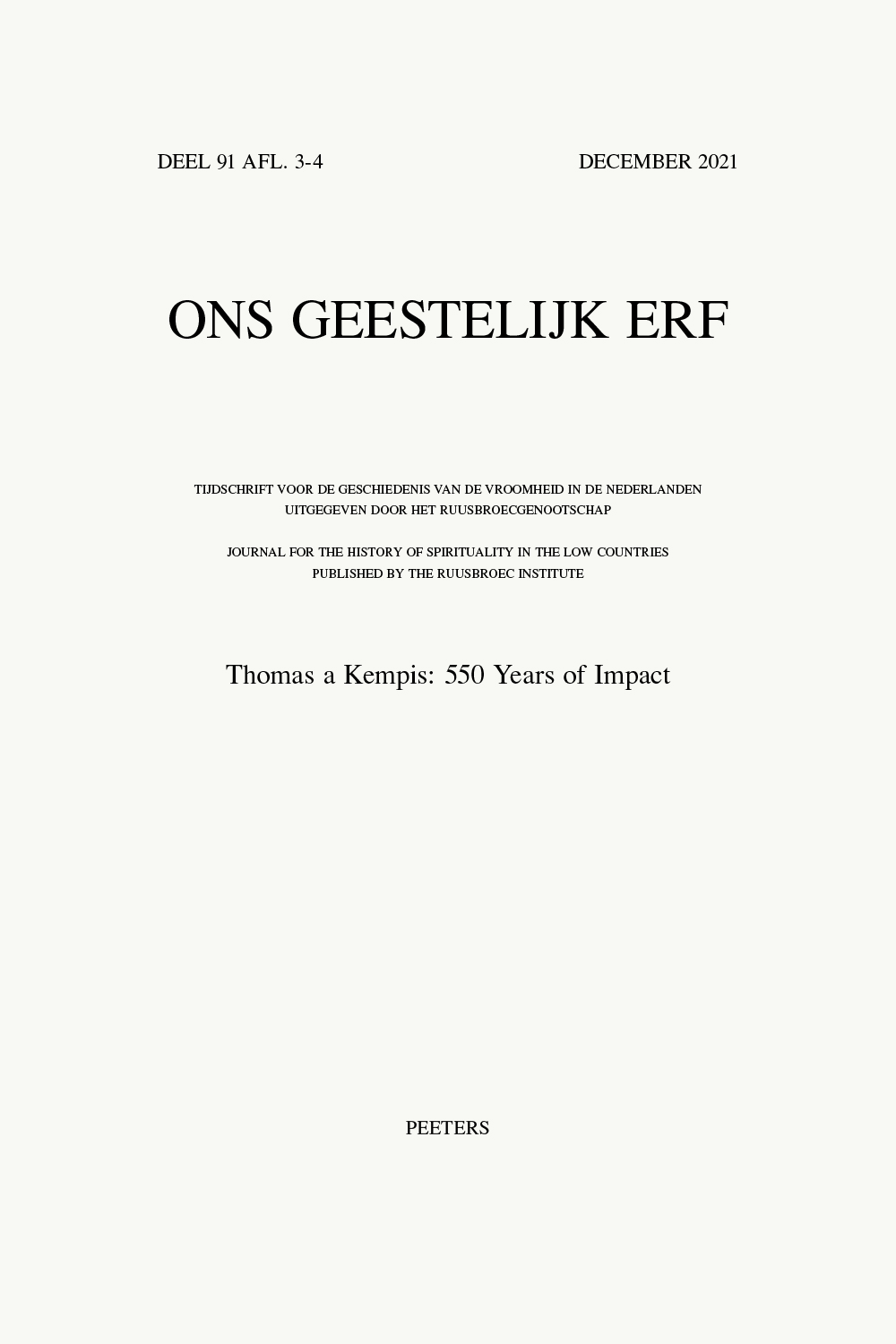 previous article in this issue previous article in this issue | next article in this issue  |

Preview first page |
Document Details : Title: Studia lectionum Subtitle: Context en praktijk van lezen en schrijven in zeventiende-eeuwse Vlaamse kartuizen: Pieter Mallants (1638-1675) Author(s): THISSEN, Peter Journal: Ons Geestelijk Erf Volume: 88 Issue: 2-4 Date: 2017 Pages: 382-408 DOI: 10.2143/OGE.88.2.3256937 Abstract : Research into Carthusian book culture knows a few lacunae. In the first place this research mainly covers the manuscript and (post)incunable period. In the second place the attention for historical possession of books is mainly codicologically oriented. We do not know what exactly went on in the monk’s cell when it comes to reading and writing. This contribution tries to resolve these lacunae by analysing the socio-cultural circumstances and the use of texts by a seventeenth-century Flemish Carthusian: Peter Mallants (1638-1675). Mallants published six translations of religious texts of varying kind and two biographies: one of Bruno and one of Denys the Carthusian. Attention is paid in the first place to the external conditions that instigated Mallants’ publications: his literary network inside as well as outside his order. His authorship can only be valued when the influence of poets like Jacob Cats or Adriaan Poirters is taken into account, as well as his contacts with publishers and authors from his direct environment, and certainly also his relations with fellow carthusians who shared his literary ambitions or wished to act as patrons. In the second place it is investigated what Mallants, as appears from his publications, had at least actually read and for which goal he used these texts, either when it came to his publications or to his personal reading. Five text traditions can be discerned: bible, classical authors, church fathers, mystics and historian. The use of the various traditions shows the difference between intensive and extensive reading and the strategy by which he made his reading his intellectual property. Finally we reconstruct Mallants’ book use in three concentric circles, each characterized by a specific type: books on his desk, in the bookcase in his cell and in the monastery library. The article delivers a contribution to the current tendency to investigate the unavoidable ‘Innerweltlichkeit’ of Carthusian spirituality. |
|


